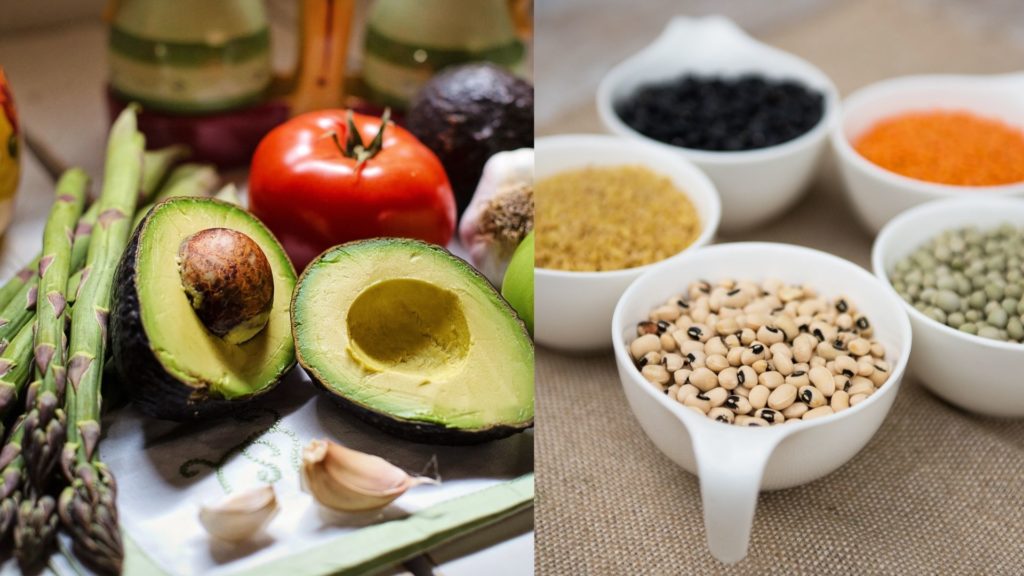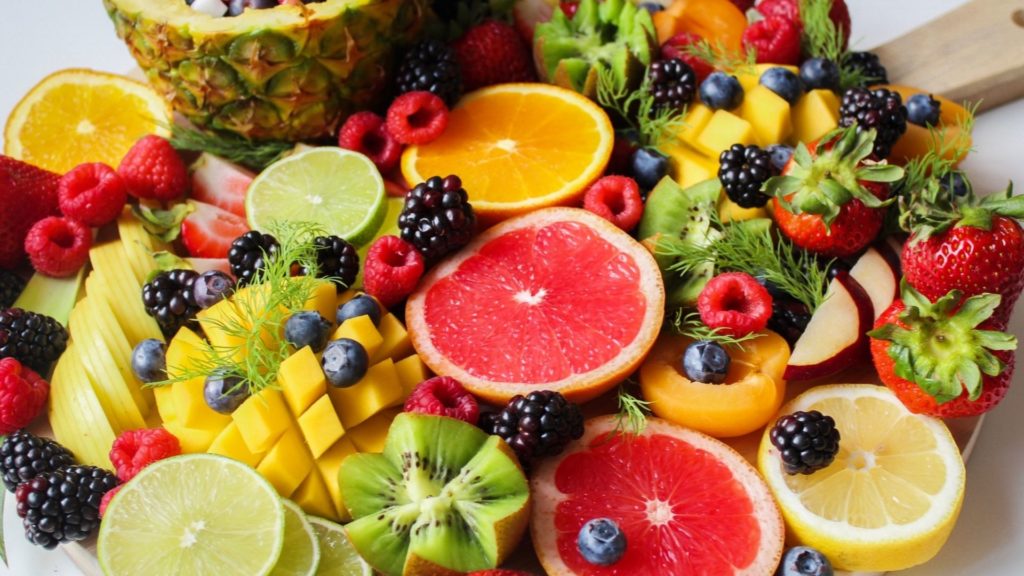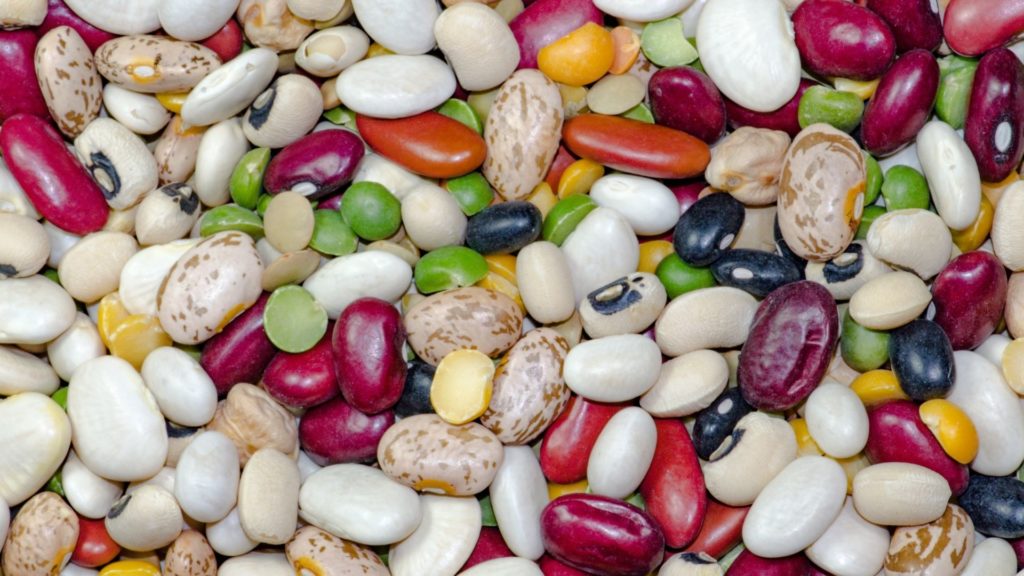There are two common types of dietary fiber, There is the insoluble fiber that should be preferred. We can find it in vegetables and fruits, and the soluble fiber that can also be found in legumes and other foods.

What is dietary fibre?
They are considered indigestible carbs but are very different from other carbs, and much lower in calories. Don’t let the term “indigestible” mislead you. Although fiber is not digestible, it’s very helpful to the body.
Types of dietary fiber
There are two common types of fiber in plant foods: soluble (Lead to gazes and fermentation) and insoluble fiber. Insoluble fiber can lower blood glucose and cholesterol levels. Soluble fibers increase the volume of the stool to regulate intestinal function.
1- Soluble fiber
We say “soluble fiber” because it’s soluble in water, when it dissolves in water it will go with the food bowl until the colon and it will stay there to feed the floral bacteria.
What does soluble fiber do in our body?
Soluble fiber can reabsorb water in the colon and increase the volume of stool, so it contributes to the improvement of intestinal transit (evacuation of stool).
Thus, it feeds our intestinal flora, so it ferments in our digestive tract, and therefore contributes to a balanced flora, thus improving our mental health and avoiding digestive disorders such as diarrhea or constipation.
Where can I find soluble fiber?
Both types of dietary fiber can be found throughout our diet. Soluble fiber is found more in green and leafy fruits and vegetables. Here are some foods rich in soluble fiber.
Foods rich in soluble fiber :
- Oat bran and oat cereals (oatmeal)
- Legumes: kidney beans, peas
- Dried fruits: Grapefruit, dried prunes.
- Vegetables: asparagus, Brussels sprouts, carrots, onion, Barley, lettuce.
2- Insoluble Fiber
Insoluble fiber is the second type of dietary fiber. it’s called “insoluble” fiber because it’s not soluble in water. So it does not have the same role as the soluble fiber. So what does insoluble fiber do in our body?

What does the insoluble fiber do in our body?
When the insoluble fiber forms a gel, it stays in our digestive tract, allowing it to capture excess cholesterol and sugar and prevent them from entering the body. We can therefore say that they have a good effect on our health!
Where is insoluble fiber found in our diet?
It’s generally found in fruits and veggies. Here are some foods rich in insoluble fiber:
- Vegetables: cucumber, carrot, tomato, lettuce, zucchini, squash, percil.
- Fruits : Apple, Lemon, grapefruit, orange, kiwi, persimmon, pear, strawberry, blackberry.
How to Increase your Fiber Intake?
In most foods, fiber contains both a soluble and an insoluble part. The properties of soluble and insoluble fibers are complementary, hence the importance of varying food sources.
There are a few tricks to incorporate fiber-rich foods into your daily meals, appetizers and desserts:
- Eat less meat and more legumes. This solution not only saves money, but also helps the environment.
- Have the puree reflex. This technique is a big hit with kids, but it works for adults too.
- Blend your beans, soybeans, cauliflower, squash or lentils and add them to your sauces, dishes and soups. These purees can be used in place of cream and cheese, which also reduces the calorie intake of the dish.
- Use seeds to boost your dishes, soups and salads. You can toast them to add a touch of crunch and try different mixtures by adding herbs as well.
- You can also add wheat bran to your morning dairy products or cut up dried fruit in your dishes or salads.
Beware of overdoing it!
“If it’s worth doing, it’s worth overdoing.” Despite the importance of dietary fiber for our health, we should never overdo it, because it can be bad, for example if we eat insoluble fiber in excess, there is a risk of diarrhea (by dietary error), and if we overdo soluble fiber, there is a risk of constipation or bloating .
Which Fiber has more Property?
Insoluble fiber have the ability to lower blood glucose and cholesterol levels. Insoluble fiber increases the volume of the stool to regulate intestinal function and you can eat enaugh without bringing much calories to your body so it even helps in weight loss, because generally foods rich in insoluble fiber are in also low in calories.
Another Type of dietary fiber?
There is also another type of fiber called functional fiber, which are actually carbs that have been isolated, extracted and/or purified. To be part of the functional fiber range, they must have beneficial effects on the body. Functional fibers are not absorbed or digested by the digestive system in the same way as dietary fibers.
Resistant starch
First of all, starch is a carb that is as complex as dietary fiber (almost like dietary fiber) but it is generally absorbed and passes into the bloodstream. However, there is some starch that resists the enzyme that breaks it down and therefore doesn’t enter the body.
Although not a type of fiber, resistant starches behave similarly to fiber in the gut. Like fiber, resistant starches do not break down into sugar and are not absorbed by the small intestine. They make their way through the digestive system intact and then ferment once they reach the colon. They can feed beneficial gut bacteria and improve the balance of the microbiome.
Some sources include:
- starch-rich foods coated with a seed or germ (e.g., unprocessed whole grains, legumes such as soybeans, beans, lentils and dried peas)
- foods high in naturally resistant starch (e.g., raw potatoes, green banana flour, and high amylose cornmeal)
- retrograde starch – formed when starchy foods are cooked and then cooled (e.g., cooked and cooled potatoes or pasta for a salad, sushi rice, etc.)
starch-rich foods that are chemically modified by manufacturers to make them resistant to digestion
Let’s wrap it up
Fiber is a type of carbohydrate that the body is unable to digest. The digestive system breaks down other types of carbs, such as sugars and starches, into simple sugars that the body can absorb and use for energy.
Fibre, on the other hand, passes through the guts undigested, adding bulk to the stool once it reaches the colon and sometimes serving as food for beneficial bacteria that live in the bowels. The health benefits of fibre are many but unfortunately, too few people in our society get the fibre they need to meet their daily requirements.
